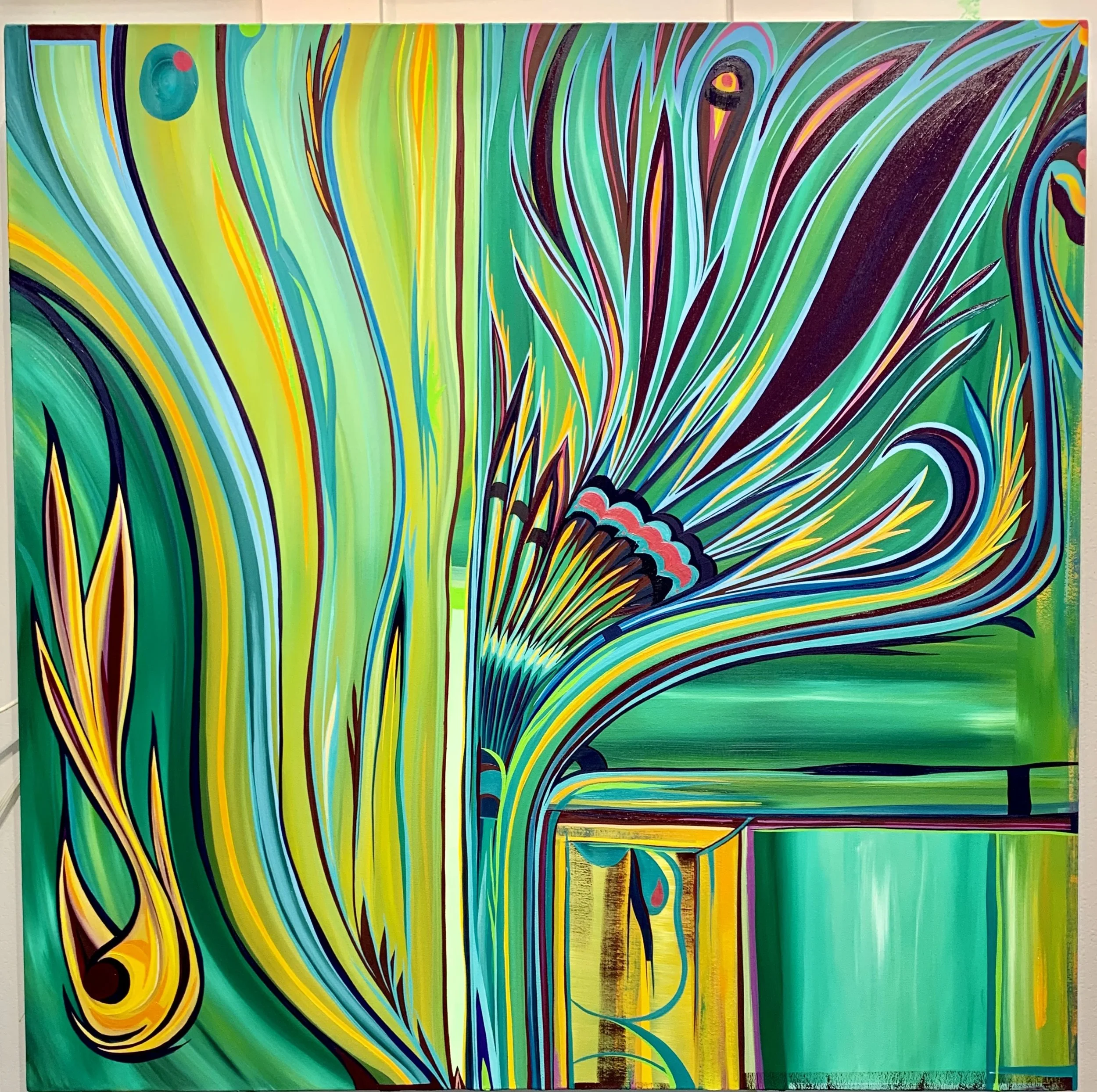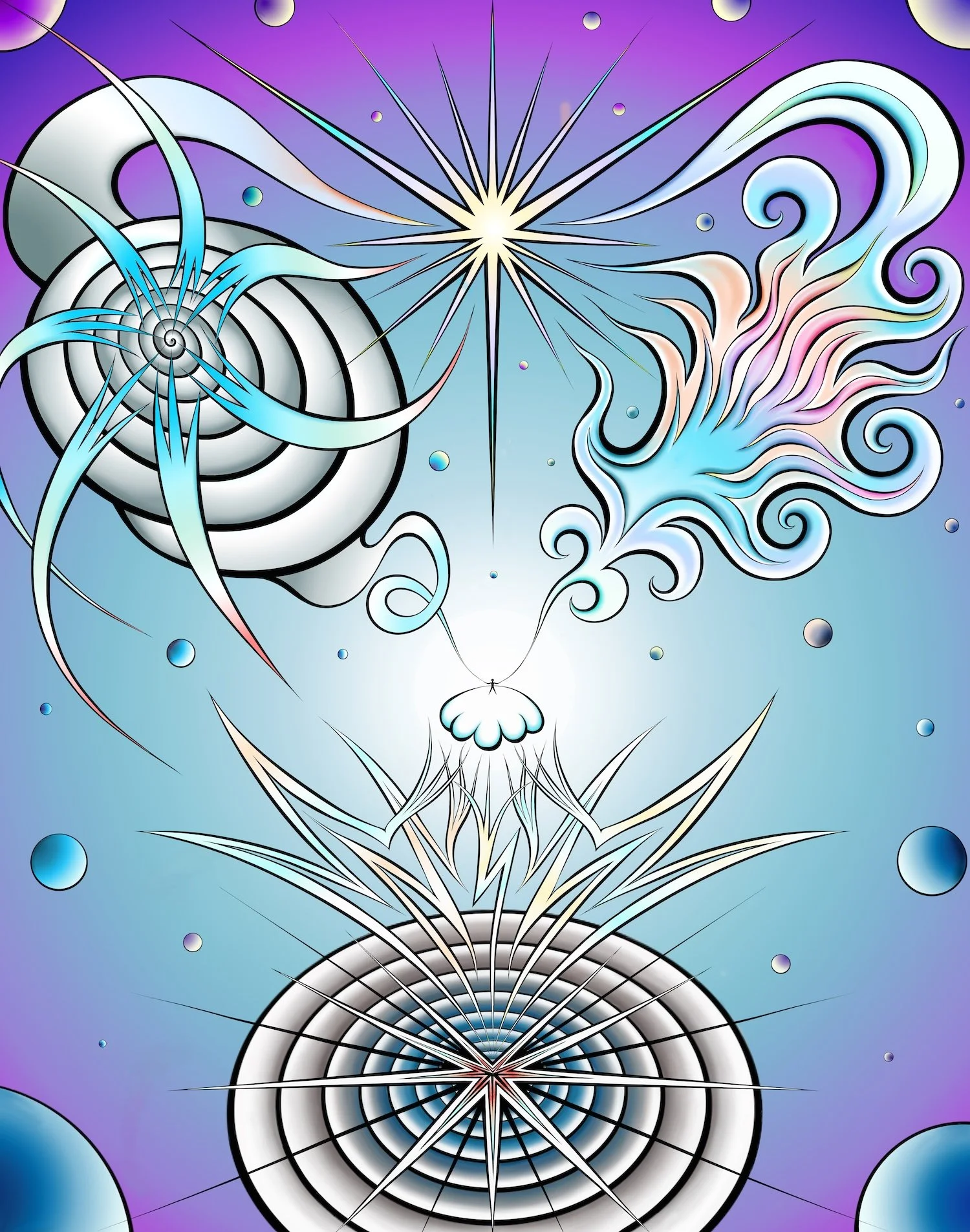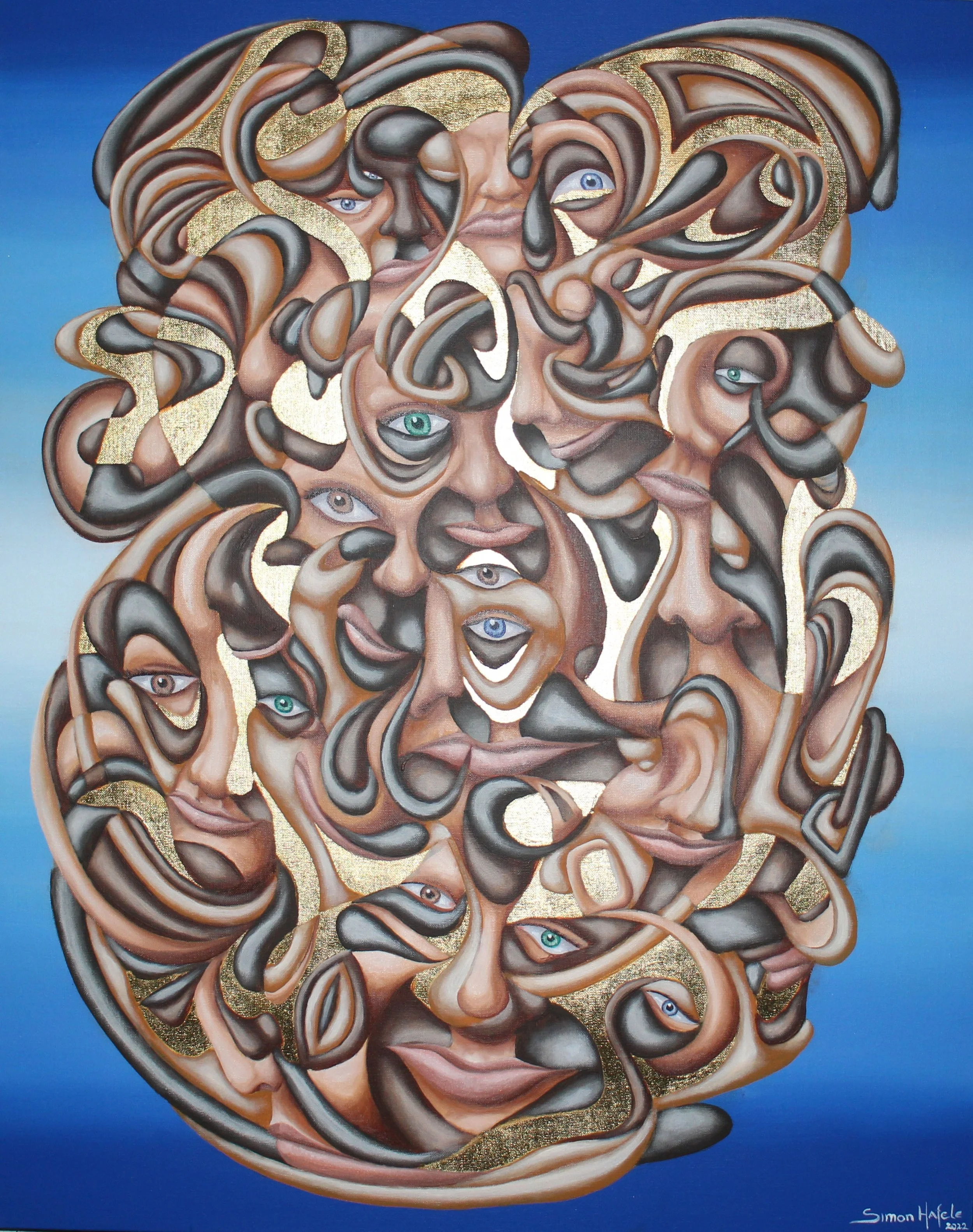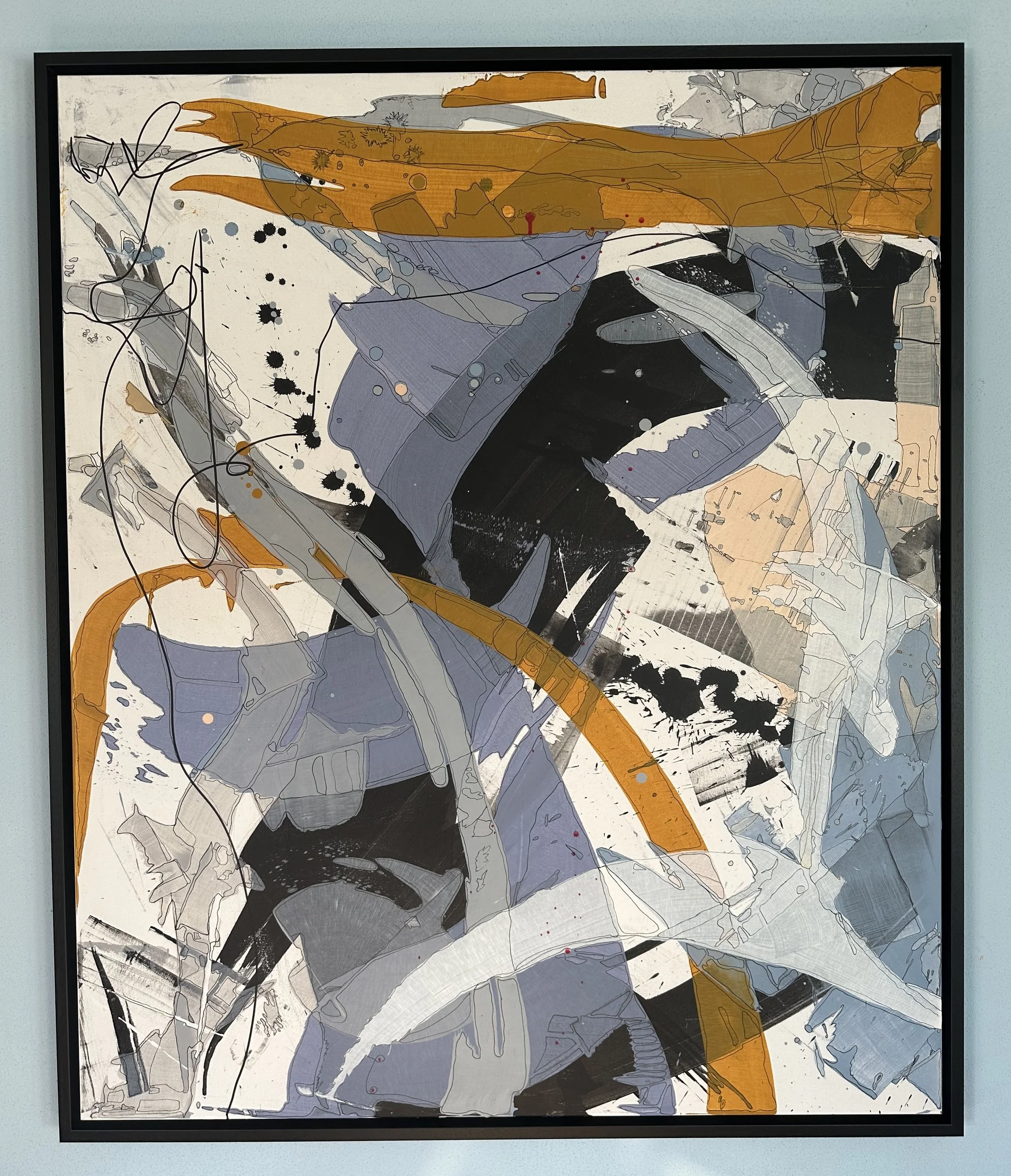GUIL works mainly in the field of public sculpture and installation in outdoor spaces. He has a predilection for abstract emotional geometry. He is inspired by nature itself, which he explores mathematically and transforms it with the desire to subvert its apparent forms, those of the human imagination, and the notion of proportion in sculpture. It belongs to the avant-garde of the second half of the 20th century in Andalusia. He has received numerous awards in national and international art competitions for Public Sculpture and Singular Architecture.
All in Interview
Interview with Maria Isabel Salazar de Lince
Born in Bogotá - Colombia. Studied Art and Architectural Design at the Javeriana University. Studied drawing and painting at Cooperartes and with masters: David Manzur, Fernando Dávila and Miguel Moyano. Her work has been exhibited in important spaces in Colombia, United States, Europe and Asia. Has received national and international recognition.
Interview with Jason “Turtle” Hannon
As a kid I lived on and off with my Aunt who was a formally trained oil painter with a Masters in Fine Art and practiced in a high fantasy type of art with a lot of mythological themes in her works. I was always excited to occasionally peak into see in her studio and the progress she would make on rather large paintings. She was very into the renaissance period. I just remembered the scale and realism was always fascinating to me how she could achieve such types of work, it seemed you could almost feel the hairs on a head of a figure or the emotion conveyed in the facial expressions so clearly.
Interview with Vasile Stefanoiu
Your artistic credo suggests a deep belief in the communicative power of art. Can you share an instance where you felt your work deeply connected with an audience, effectively conveying its intended message?
My sculptures do not hide anything, the message is all the easier to receive as the viewer intuits the greatness of Greek mythology and the digital pulse of the new era, having the revelation of the lasting dialogue between classic and modern, static and dynamic, and corporeal and abstract from my sculptures.
Interview with Shirley Werner
When I lived down by a river, I was inspired by my many walks along there, from different trees, rocks, and an old shipyard with old metal pieces. One day, while I was walking down there , I saw an image on a concrete wall that looked like a bird, and I spent many days digitally painting it until I was satisfied with it.
Interview with Caroline Degroiselle
I'm an autodidact when it comes to LIFE in general. I'm curious and eager to discover, and reducing myself to an academic approach doesn't suit me. I've evolved with courage, hard work and passion, over the course of my life as a woman artist, giving myself the freedom to create my own writing and offering myself the challenge of not resembling anyone by not locking myself into an academicism or fashion. At the start of my career, this may have seemed inconsistent to art professionals, but over time it has become an asset of authenticity.
Interview with Enzo Forgione
Enzo Forgione lives and works in Turin, Italy where he get a degree at Fine Art Academy. After graduation he has many experiences between applied art and design until 2006 when he starts painting full time. His first solo show is held in Turin In 2009, followed by many other solo and group exhibitions in his country and abroad.
Interview with Raúl Vega
Could you share with us the story of how you first became interested in photography? What were your initial steps in this field, and who or what were your early inspirations and influences?
While at the school of Architecture in Florence, Italy I became a very good friend of a fellow student who was also very interested in photography. We ended up traveling together through parts of Europe and N. Africa after the school year taking pictures. We inspired each other. My early inspirations were Avedon. My first serious camera was a Rolleiflex twin lens reflex because that's what he used. Then later, I loved the work of Guy Bourdin and Hiro.
Interview with Teresa Bellini
Since 2018, Teresa has attended painting classes in Padua. During the 2020 lockdown, she experienced an intense creative period that led her to consider painting as an essential part of her life. She participated in group exhibitions in Italy, Europe, and the United States, and she exhibited her artworks in two solo exhibitions in Italy. Three Galleries in New York represent her.
Interview with Cecilia Arrospide
My first experience with art was at home. My mother was a fine artist, and apart from watching her paint, I shared with her books on artists she had. At school, I also was good in art classes because I had the ability to draw. I believe art is in my bones, I come from a family of artists, my first atistic vocation was iterature, but afterwrads I stared painting and never left it. I went deeply into this great and profound world, and I am passionate about it.
Interview with Edward Bakst
Can you share your journey towards becoming a successful artist? Were there any pivotal moments or challenges that shaped your career?
For me, life in general offered both challenges as well as inspiration motivating my strive forth, inspiring ideas and need for expressing and sharing my personal and emotional expressions. I deem that growing under Communism sparked strong rebellious reactions against feeling of oppression and lack of freedom of speech. My artwork of that period was very defiant. Yet, once a wave of antisemitism swept my former country, these feelings intensified. A new sense of pride in who I am arouse. It further intensified when I found myself being chased by many of my own classmates, now former friends, whose eyes and minds were soiled by governmental propaganda. Rebelling against being seen as less equal, I chose to resign my citizenship, becoming a political refugee, departing as both stateless as well as a persona non grata.
Interview with Simon Hafele
Reflecting on the evolution of my artistic style, the trajectory of my work can be traced back to the initial inklings seen in the graduation poster I designed for the Elbigenalp carving school. The naivety of my 18-year-old self manifested in those early creations. Subsequent journeys to India acted as a catalyst, lifting the fog and providing clarity to my artistic vision. Over the years, my perspective has matured, resulting in refined brushstrokes and a clearer view of my artistic intent. While adhering to my fundamental approach in art, I have delved deeper into areas of interest, such as sacred geometry, Fibonacci sequences, and the philosophical and mythological underpinnings of symbols. These elements seamlessly integrate into my art, reinforcing my thematic focus on love, mysticism, and the supernatural—embodied by the motto "die to live."
INTERVIEW WITH Simon Darling
My journey into the world of art is intricately woven with the influence of my mom and her innate creativity. From the very beginning, she provided a nurturing environment that encouraged exploration, imagination, and self-expression.
My mom, herself a creative soul, instilled in me a deep appreciation for the arts. Our home was filled with colors, textures, and a constant flow of creative energy. Whether it was her own artistic endeavors or exposing me to various forms of art, she cultivated an environment that fueled my curiosity and sparked my initial interest in the world of creativity.
Interview with IRIS
What has always fascinated me in my experiments with water is the elegance of the organic forms that form on the surfaces where I let the water flow over. This unique elegance is given by the accuracy of the contours and the uniqueness and complexity of the composition. Where water leaves its mark, something magical always happens. This happens even when I experiment with just a few splashes of water. No experiment is the same, each time there is something new that captivates. Over time, I have also used other liquid substances in their simple form or mixed with other substances in powder form like: melted wax, honey, milk, ink, melted sugar, oil, wine, liquid soap, fruit juices, water with flour, water with sand, water with ground coffee, very salty water, melted chocolate and many others.
Interview with Marcello Muiesan
How has your experience in different fields like football, military service, and the culinary influenced your approach to painting and graphic design?
My experience across varied fields such as football, military service, and culinary arts has profoundly influenced my approach to painting and graphic design. Working in diverse fields, even those unrelated to my primary occupation has significantly broadened my perspective. This has facilitated meaningful connections with individuals from disparate backgrounds and cultivated a meticulous eye for detail, crucial in driving my creativity. Furthermore, this multifaceted experience has allowed me to perceive the world from different vantage points, enabling me to capture its intrinsic beauty in my artistic pursuits.
Interview with Emiko Aida
Emiko Aida was born in Tokyo, Japan and graduated from MA, Fine Art, The Tokyo University of Arts / MA Printmaking, Royal College of Art, UK. She is currently a painter, printmaker and mixed media artist living in London, UK. Her work is exhibited in the U.K., the U.S.A., Italy, China and Japan and in many private, public and corporate collections including the New York Public Library, USA, Guangdong Museum of Art, China, Ashmolean Museum, Oxford, UK and Victoria and Albert Museum, London, UK. She is a member of Royal Society of Painter–Printmakers, U.K.
Interview with Karine Grazia
Karine Grazia (b.1986) is a freelance artist who lives and works in Italy and Estonia. In 2011 she graduated with a degree in interior architecture. Karine paints abstracts with acrylics. When creating her work, it is important for her to take into account the interior where the order goes. She desires to create an ideal environment, where people would feel comfortable. A picture on the wall can create a completely new feeling in the room. Since she has studied interior architecture, this is where it is possible to combine the two parts. The result is exactly what she wants to achieve through art.
Interview with Merle Luhaäär
Merle Luhaäär is an internationally exhibiting experimental mixed media artist. She has graduated from Royal College of Art (2019, London, UK) with MA in fine arts and received her BA in fine arts at Kingston University London. Her art practice is underpinned by an interest in relationship between individual and society, micro- and macrocosm and relativity of reality. Themes are explored through variety of mixed mediums of painting, print, photography, installation, sculpture and moving image.
Interview with Eva Moosbrugger
Your work blurs the lines between art, architecture, craft, and design. How do you navigate these overlapping domains in your creative process?
For me, the artificial separation of art, architecture, craft and design does not exist. My work includes objects from functional vessel to abstract sculpture, from the tiny to the 3 tonne steel sculpture, from the curious to the spiritual. I let myself drift by following my artistic intention and sometimes create a work of art that is also suitable for everyday use, or a design object with artistic properties. That's why it's sometimes difficult to categorise them clearly.
Interview with Maria Petrovskaya
Maria Petrovskaya is a NYC-based artist and curator. She is a graduate of the School of Visual Arts (NYC). Her works in painting and sculpture explore the human body, movement, color, the subconscious, and the surreal.
Her art and curatorial projects featuring emerging contemporary artists were listed as must-see by the Art Newspaper, LA Weekly, Hyperallergic, L’Officiel, and Whitewall Magazine, among others.




















